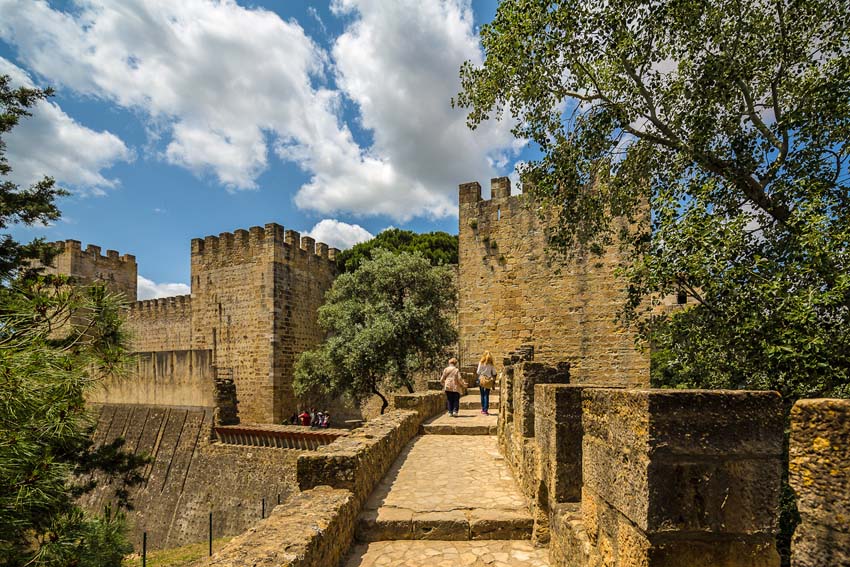Shades of flawless turquoise and rusty orange flood my vision, as clean, crisp sea air cleans my soul.
It’s around 19° – the perfect temperature, or so my warm blood dictates. I close my eyes and lean into a gentle breeze while feeling high – although that might be a sugar rush from the three pastel de natas (traditional egg tart pastries) eaten for breakfast.
The last time I felt such travel-induced euphoria was cycling over San Francisco’s Golden Gate Bridge. It’s uncanny then, to open my eyes in Lisbon, Portugal and see the Gate’s spiritual sister, the 25 de Abril Bridge, in the distance. (Not to mention the Christ the King statue, which resembles Rio de Janeiro’s Christ the Redeemer).
Its 70m-tall towers, built in 1962, are unmistakable, visible from many vantage points around this famously hilly city.
They’re especially commanding from where I’m standing – the doorstep of Lisbon’s centerpiece: the sprawling 11th century São Jorge Castle [below].
I made a beeline straight for it, such is its Medieval allure, navigating the city’s winding mosaic sidewalks to the first of many stunning views.
From here, the bridge’s distinctive colour is echoed in the quaint terracotta of a thousand rooftops in the foreground. It’s gorgeous.
The City by the Bay meets the City of Seven Hills
The bridge is the first of several parallels to be drawn between Lisbon and the City by the Bay. Like its Californian cousin, Lisbon enjoys pleasant weather for much of the year (with 2,799 hours of sunshine a year, it’s Europe’s sunniest capital). Plus, its coastal location ensures the air is always fresh and clean.
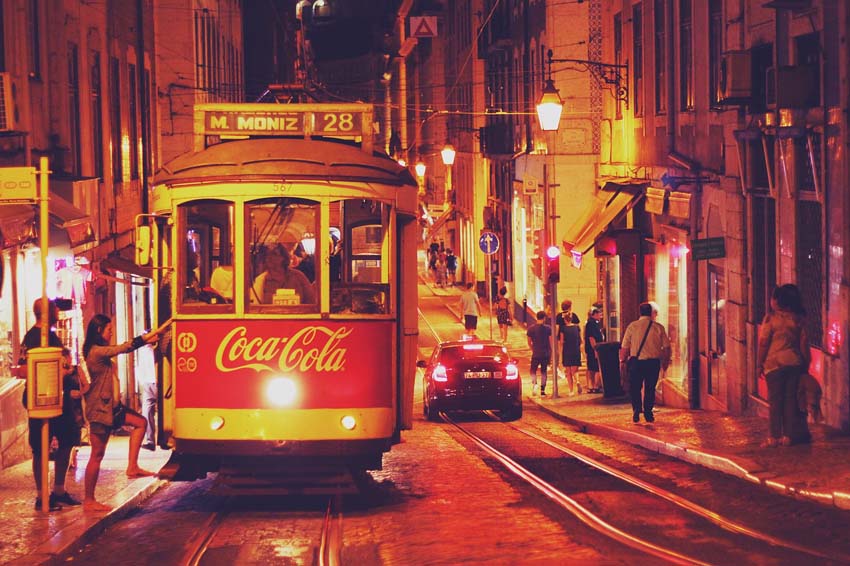
There’s also a broad similarity between the few remaining cable cars of SF and the more widespread but no less ramshackle wooden trams of Lisbon, in operation since 1873.
Furthermore, Lisbon’s a magnet for progressive and forward thinking people, as is the country proper – it achieved marriage equality way back in 2010. Lisbon is also, of course, on the radar of many Europop-loving LGBTIs in 2018 as the recent host city of the Eurovision Song Contest.

Lisbon actually has echoes of many amazing cities, such as the gritty, graffiti-covered coolness of Athens and Berlin, as well as the rich history and the vibrant cosmopolitan character and cuisine of Barcelona and Madrid. And the price point in on point: a beer is a couple of Euros, and you can easily find a decent three course meal with a bottle of wine for under €30 (£26.47, $35.44).
For the perfect weekend in The City of Seven Hills, grab yourself a Lisboa Card – a handy transport card and museum pass, available from €13.33 a day (£11.70, $15.59) – and follow this quick fire guide…

One of the city’s most emblematic symbols – a mini fortress which looks more like a mini castle – dates back to 1519, and was designed to protect the Port of Lisbon.
It, for me, feels like a punctuation point, marking where the River Tagus meets the North Atlantic Ocean. It has the beckoning beauty of a lighthouse.

One of the best modern art galleries I’ve visited, packed to the rafters with iconic works by the likes of Andy Warhol and Jeff Koons.
Berardo is actually on a par with London’s Tate Britain, MOMA in New York City and the Art Institute of Chicago for me, but my experience here was more pleasant than any of these. It’s a little way out of the center of town, and with just over 1 million visitors per year (the Tate has 5.3m), the art has room to breathe. I never once felt cramped or stressed.
A short walk from both the tower and the gallery is this glorious limestone monument, commemorating the Portuguese Age of Discovery. Opened in 1960, its sharply angular design still feels fresh today.
When the light is just so, it seems to sparkles with pride, and the flat top roof, 50m in the air, is a lovely spot to watch the sunset.
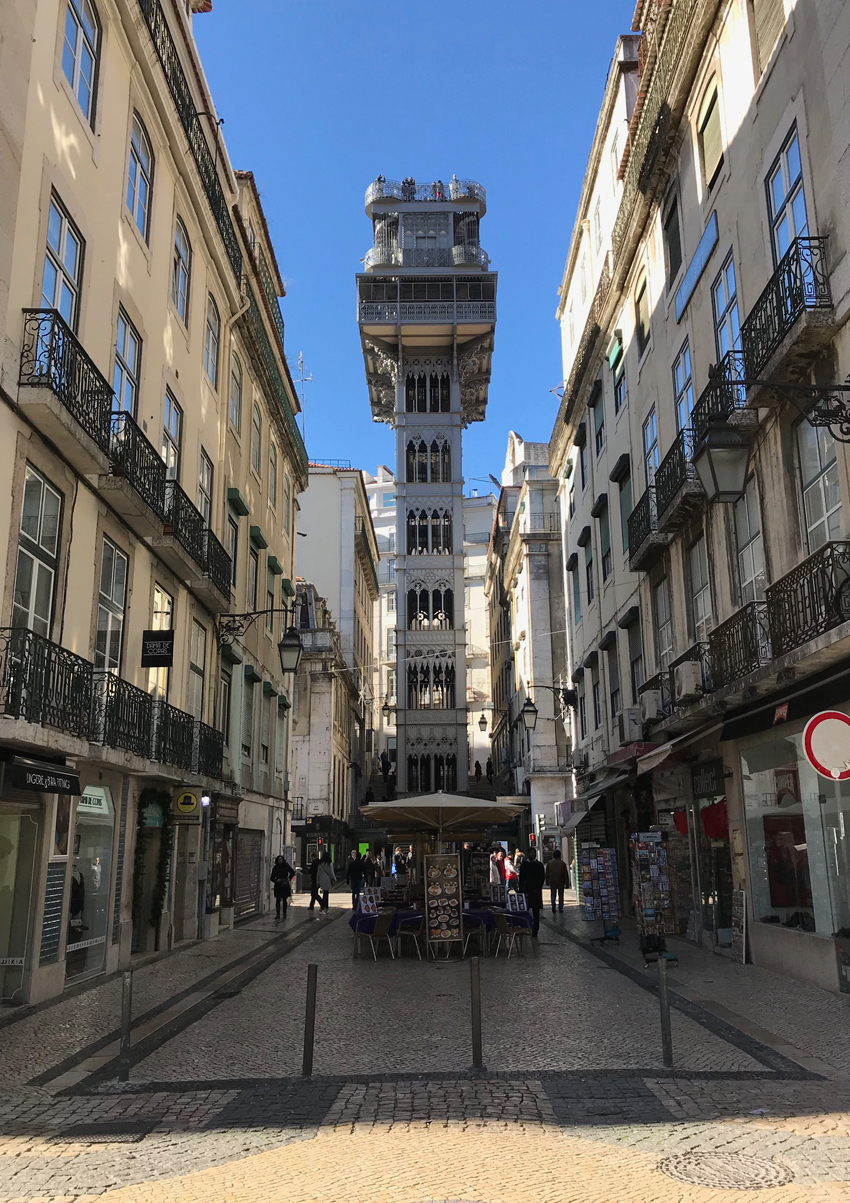
Santa Justa Lift
It’s five feet shorter than the aforementioned monument, but perhaps the most perfect viewpoint in Lisbon is available in the town’s historic center, atop this gothic tower encasing a rickety lift.
A National Monument, Santa Justa has soothed the hardworking calves of locals and visitors alike since 1902, and offers panoramic views. Be prepared to queue.
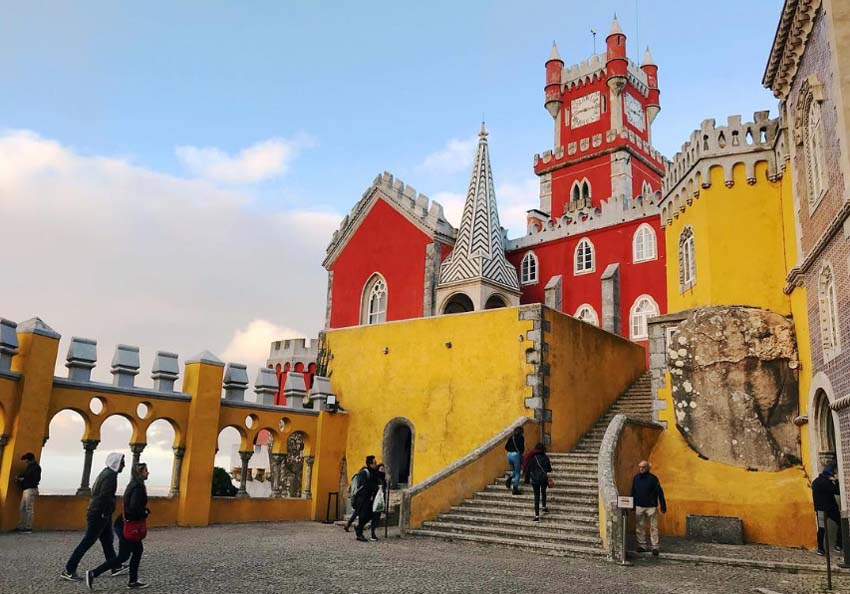
Pena Palace
For a short day trip out of the city, head to Madonna’s mountainous hood, the upmarket municipality of Sintra. From the hilltop fortress Castle of the Moors to the picturesque lighthouse of Cabo da Raco, there’s plenty to see and do in the area, with minibuses serving the woodland hills swiftly and efficiently.
Top of your list, though, should be the dazzling Pena Palace, once home to King Ferdinand II. A UNESCO World Heritage Site, this sprawling Romanticist build dating back to 1854, and looks magical and hand drawn.
If you do travel in from Lisbon though, try to get up as early as possible and don’t visit on a cloudy day, like we did. The faint outlines of spectacular views were almost painful…
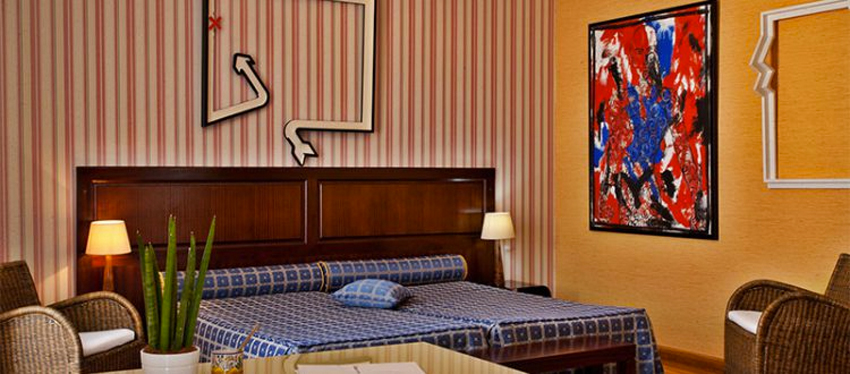
I couldn’t have asked for a more perfect location than that of the boutiquey four star Solar dos Mouros, in historic Alfama. It’s five minutes on foot from the city center, and the São Jorge Castle is even closer (in fact, this 18th century building is technically within its ramparts). Lisbon Portela Airport, meanwhile, is 30 minutes in a taxi.
Located between the Alfama and Baixa historic neighborhoods, the informal 11-room stopover is full of powerful, clashing colors and daring modern art. Furthermore, the hotel’s elevation means it once again boasts great views of the city and water beyond. Ask for a room with a balcony to fully appreciate, or dine in the adorable little courtyard.

The best part was the pastel de natas (those custard tarts: legend has it only four men know the recipe), bought outside and served as as part of the decent continental breakfast each morning. Lisbon is home to many cute, rustic bakeries, but gorging on the super fresh pastries here at the hotel each morning satisfied my urges throughout the day.
The Solar Dos Mouros rates are from €129 (£113.30, $150.86) for a single and €139.00 (£122.09, $162.55) for a double.
Speaking of food, the best meal we ate in Lisbon was at Cantinho do Avillez, in the Chiado neigborhood. It is one of a large handful of sophisticated and immensely popular eateries belonging to the Michelin-starred chef José Avillez.
The menu is traditional but modern, with plenty of wondrously fresh seafood and quirky twists. (‘Exploding’ olives, anyone?). I adored the smooth chestnut soup with fennel, while the mini partridge pies were far more elegant and tasty than you get it Britain, and the cured Alentejo pork had a very distinctive taste.
The velvety-fried scallops, served with asparagus and sweet potato, were a light but satisfying dish. The meatball green curry was a curveball, but equally zingy and refreshing.
For an insight into the price point – starters-wise, the tuna tartar and fish soup clocked in at around €12 (£10.59, $14.17); the two light but fabulously rich desserts – a delicate hazelnut ice cream with hazelnut foam, and jarred raspberry cheesecake – are even more of a steal at under €6 (£5.30, $7.09).
Generally speaking, the seafood in Lisbon was the freshest I’ve ever eaten. The tastiest salmon of my life was consumed at, of all places, Pharmacia: an eccentric drug store-themed restaurant, under the same roof as the curious Museu de Farmacia, in Santa Catarina.
For more information about the hotel, head to solardosmouroslisboa.com. For more information about Lisbon, head to VisitLisboa.com. For more information about the Lisboa card, head to lisboacard.org.


